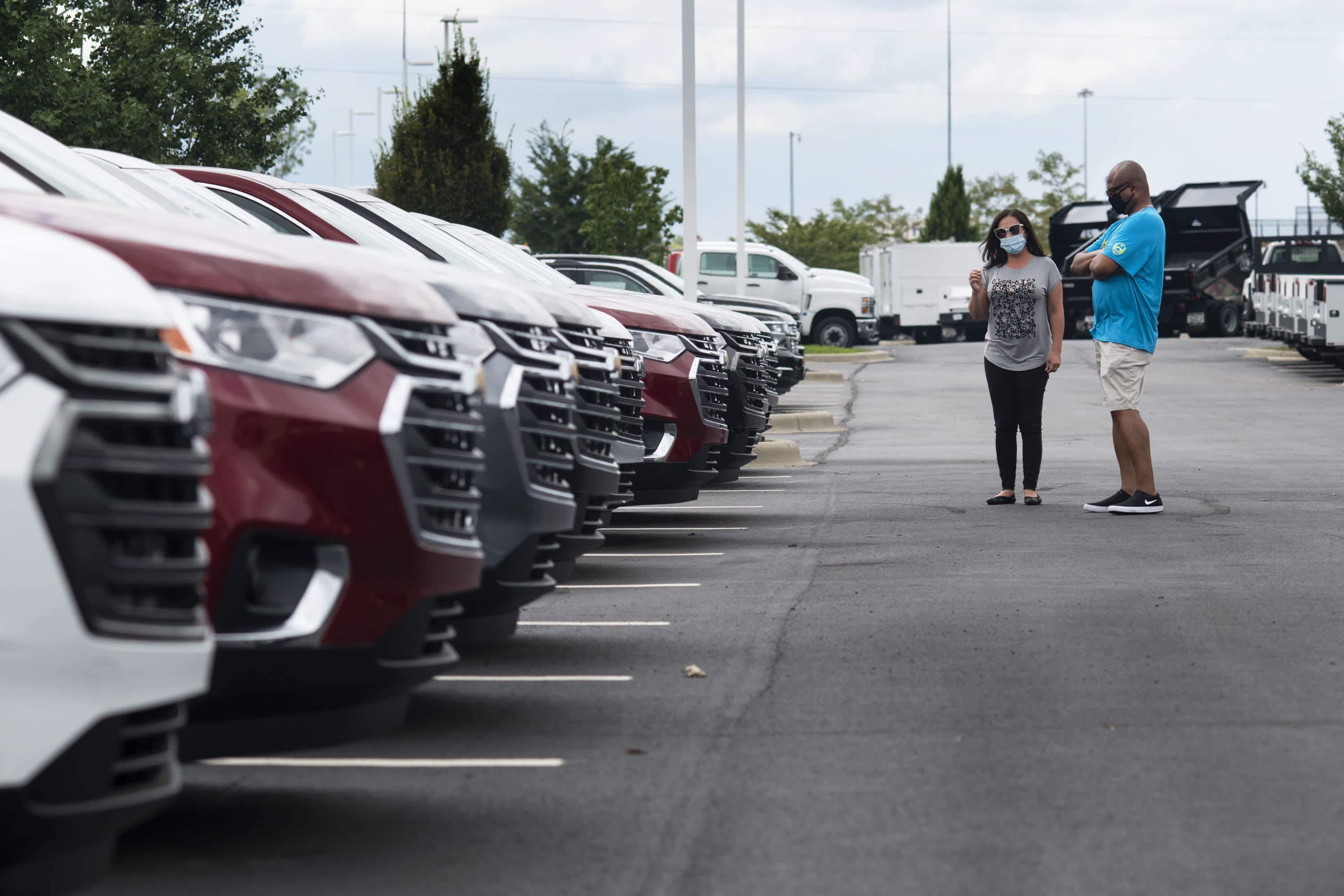How to find a good end-of-year deal if you’re in the market for a new car

Ty Wright | Bloomberg | Getty Images
For car buyers, the end of the year typically marks the best time to get a great deal.
Things look a bit different this time around. While there are still discounts and special financing on certain makes and models, those incentives generally are not as generous as in past Decembers, experts say.
“It’s not a buyer’s market, but there are still discounts,” said Ivan Drury, senior manager of insights at Edmunds.com. “Are they as widespread as they were? Certainly not.”
Due to a confluence of factors — including an inventory squeeze from early-pandemic factory shutdowns and the unanticipated demand from homebound consumers wanting to get on the road — discounts are not as high this month as they might have been otherwise.
Basically, dealerships don’t have to push as hard to move cars off their lots. The average time it takes for new inventory to sell — both 2020 and 2021 models — is 50 days.
“It used to be 60 to 70 days,” Drury said.
It’s not a buyer’s market, but there are still discounts.
Ivan Drury
Senior manager of insights at Edmunds.com
Additionally, in recent years it was common to see an average 10% or more off the sticker price with occasional dips below that threshold, said Kelsey Mays, senior consumer affairs editor for Cars.com.
“Now we’re in the fourth consecutive month of it being under 10%,” Mays said.
The average amount paid for a new vehicle is now more than $38,000, which is a record and up from about $37,100 last month, according to a forecast issued last week from J.D. Power and LMC Automotive. Much of that is driven by shifting consumer demand for larger vehicles like SUVs and trucks instead of smaller cars, as well as improved technology and safety features.
And although the used-car market saw a surge in demand this year, which pushed up prices (as well as trade-in values), that seems to have cooled a bit as some buyers have discovered that a lower-priced new car isn’t much more than some pricier used ones, experts say. As of October, used-car buyers paid an average $24,000 for a 3-year-old model.
Other used-car shoppers may be waiting for 2021.
“Typically people would rather wait for next calendar year to change, because then model year is a year older,” Drury said.
Where the deals are
Generally speaking, you’re likely to find a bigger discount on current-year models. Across all categories — everything from large SUVs and trucks down to compact cars — the average discount for 2020 vehicles is more than $5,000, according to Edmunds data. For 2021 models, that number is below $3,700.
Some brands also might offer bigger discounts due to slower sales on particular 2020 models. In the Cars.com database, 34% of vehicles are this year’s models overall. However, for Ford, it’s above 72% and for Nissan, 61%.
“Those are two very mainstream brands that have a whole bunch of 2020 models that consumers could find pretty strong discounts on,” Mays said.
For example, the 2020 Ford EcoSport, which starts at about $20,000, comes with a manufacturer’s discount of $3,250 to $6,750, depending on the car’s trim and where you live, according to Cars.com. On the Nissan 2020 Pathfinder, meanwhile, a discount of up to $4,500 is possible.
More from Personal Finance:
Here are some year-end money moves to make
Here are three of my worst money mistakes
Not all end-of-life decisions are covered in a will
Also be aware that buyers with good credit scores may qualify for 0% financing (or close to it) on certain cars. However, if there’s a cash discount on the auto you’re looking at, you may have to choose between that deal and the cheap financing.
“Most consumers have to balance whether they want the cash back or the 0%,” Drury said. “Sometimes you can get both.”
Other cost considerations
It’s well known that new cars lose value fairly quickly once they’re purchased and continue to depreciate over time.
So if you’re considering a lengthy loan — i.e., 72 or 84 months — be aware that it can take longer to reach a point where you no longer owe more on the car than it’s worth. That is, when you are past the point of so-called negative equity, also called being upside down on the loan.
While it depends on the type of car and the specifics of your transaction — how much you finance, the interest rate, how many years you’ll be paying — negative equity can make it hard to sell the car for at least what you still owe on it, or to trade it in without rolling the remaining balance into a new loan.
Ask yourself whether you’ll still like the car in another three, four or five years.
“Not only is the commitment longer when you have extended loan terms, hitting that breakeven point, where you’re not upside down, is farther out,” said Matt Jones, director of industry education at TrueCar.
“Make sure it’s the right car not just for now but for the future,” Jones said.
Additionally, it’s worth checking to see how the new car would impact your insurance. Depending on the make and model (as well as factors like where you live, your driving record and claims record), your insurance premiums could go up.




